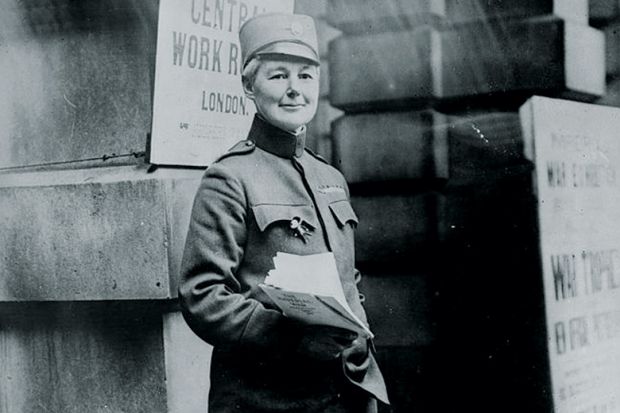When the First World War broke out in 1914, the British military was reluctant to accept the services of women, even those from the medical profession. Yet a surprising number of British women went to work for the Allied armies on the Eastern Front, particularly in Serbia and Russia. Drawing upon a wide range of personal texts such as diaries, letters and memoirs, Angela Smith draws a poignant picture of war life as experienced by these doughty pioneers.
The Scottish Women’s Hospitals for Foreign Service, funded and supported by the Scottish Federation of Women’s Suffrage Societies, was one of the most successful of the women’s organisations during the war. Driven by Elsie Inglis, a doctor and a seasoned suffrage campaigner, it established units in the Balkans, Russia and Romania. The Serbian Relief Fund was active in this respect too, as was the British Farmers’ Hospitals for Serbia.
Mainly from the middle and upper-middle classes, these women were largely self-funded. An ethos of duty and patriotism inspired most of them to venture East, as well as the opportunity the war offered to escape from restricted Edwardian lives. Conditions were often tough, as in the 1915 typhus epidemic in Serbia when some of the women died. But others lived to tell their remarkable stories.
The fluidity of gender roles in wartime gave some of the women the opportunity to adopt practices more usually associated with the male sex. Flora Sandes became the only British woman to serve on any front in the First World War. With her cropped hair and breeches, she successfully made the transition from nurse to soldier in the Serbian army. Although badly wounded in 1916, her gender won her no favours. She recollected that the doctor treating her “lit a cigarette, thrust it between my lips, and told me to ‘shut up and remember I was a soldier’”.
When Serbia was invaded in late 1915, those British women who stayed behind became prisoners of war. Many turned to their “Britishness”, both to protect their medical charges and to make their own personal stand against their captors. Caroline Twigge Matthews, for example, accused of being a spy, remembered, “I think it was this realization of my nationality that upheld me. Fear? One could not show the white feather to Britain’s foe…We have learnt what the Empire means and our love for our King is a very real and personal matter.” Matthews kept a Union flag wrapped around her body, as did Alice Hutchinson.
Relatively few British women worked in Russia before 1916 and those who did faced uncertainty when the Russian Revolution took place. By the end of war, most of the British women had left, although a few medical women and relief workers remained in the Balkans well into the 1920s.
Most previous studies of women’s work in the First World War have focused on the UK, France and Belgium. The strength of this engaging book is that it challenges that dominant narrative, showing how British women offered medical care and humanitarian aid on the Eastern Front. In so doing, it makes an important contribution to First World War studies.
June Purvis is professor of women’s and gender history, University of Portsmouth.
British Women of the Eastern Front: War, Writing and Experience in Serbia and Russia, 1914-20
By Angela K. Smith
Manchester University Press, 240pp, £70.00
ISBN 9780719096181
Published 1 July 2016




